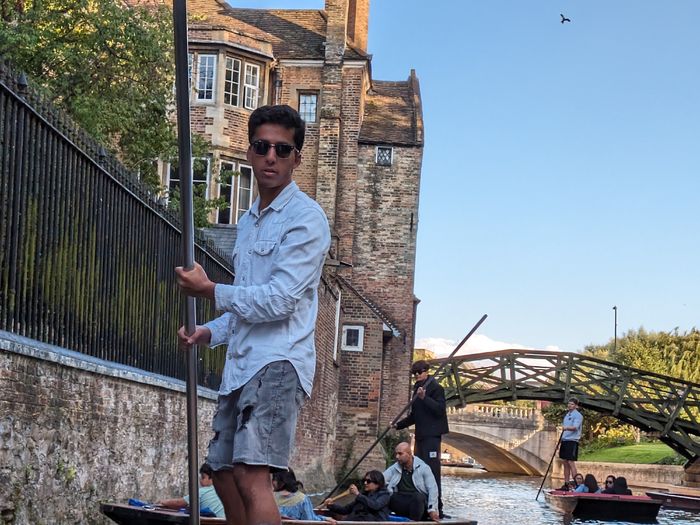Student spaces are what we make of them
Cambridge’s spaces may be grand, but we can make them our own, argues Maddy Browne

It is January once more, and Oxbridge applicants are waiting nervously for the outcome of their interviews. For most, Cambridge was only a Zoom call away, however many miles separate the interviewer and interviewee. I wonder what it must have felt like for some of this year’s prospective students, waiting for their in-person interviews outside rooms with more oil paintings than a museum. Only a few colleges have chosen to return to in-person interviews and I only hope that either decision came with access considerations in mind. After all, it should be about whether it is easier for a college to provide candidates with the technology to do their interview online or to subsidise travel.
“The antique environment which we live in is beautiful, but this is often a difficult kind of beauty.”
Most of what I remember from my offer-holder day and my first visit to Pembroke was the beauty of the buildings, and the relief that the mysterious Oxbridge interview no longer stood in the way of my place in those buildings. To those in the middle of that interview process, perhaps the beauty is more intimidating than exciting. Those buildings could serve as a reminder, alongside the paintings of old white men lining the halls, that the doors of college have only recently been held open by bright-shirted student ambassadors. They could easily become symbols of more than just classical imitation.
In the nearly two years since that visit, I have found that such spaces can become what we make them. For the most part, the student-run societies and bops fill college spaces with the reminder that we are here to take up space. Yes, partying in fancy-dress may count as an act of protest. The antique environment which we live in is beautiful, but this is often a difficult kind of beauty. We need to be allowed to engage with this environment. What is the use of streets paved with gold if we cannot see our faces in them?
I can take my parents to gawk at Pembroke’s hall and forget that, even as I point out the Countess of Pembroke, the founder of the college, on the far wall, women were only allowed to be there in 1984. If the Fitzwilliam Museum can engage with its colonial beginnings in its recent ‘Black Atlantic’ exhibit, then the university should too. Legacies of enslavement were literally built into the columns that make up the museum’s entrance. I wonder what hidden legacies are built into the rooms where we have supervisions, or meet for brunch.
“This should come with an often much-needed reminder that no matter who walked there first, we are here now.”
Perhaps, then, if we didn’t treat each college like a zoo, or a museum with its buildings on display, they wouldn’t feel like one. This starts by carving out our own space: flying our flags, protecting student-run bars and making design choices that diverge from the Medieval-corporate dichotomy of college decor. For example, Sidney Sussex bar managed to dodge last year’s plan to install CCTV using the bar’s own budget, yet remains an endangered species as one of the last student-run bars. This is besides the fact that it would be easier to break into Fort Knox than get into Sid bar on a Saturday night. In addition, SU undergraduate president Fergus Kilman was right to include an SU bar in his campaign manifesto. The physical space of the SU building can go further than this and include a modernised common area that welcomes students without expecting them to buy anything.
Colleges themselves can also open up. If I didn’t feel like a spy going through Trinity just to catch a view of the Wren Library, it wouldn’t feel so grand and so alien. The tourists going around the city can be annoying at times, but their presence does represent a space that is freely open to the public, not concealing its ivory tower from view. The fact that they are there in the first place admittedly does contribute to the ‘zoo’ perception. The alternative would be a city full of buildings that feel even more wealthy and secretive than they already do. Even the newer colleges would bear the image of a Cambridge that is distinctly separate from the city it resides in. Charging them a fiver just to see the Mathematical Bridge is far from upholding an open environment.
I will continue to take the scenic route through the back gate of King’s, as if I were a VIP holding out my card for the purple-scarfed porter. This should come with an often much-needed reminder that no matter who walked there first, we are here now. All of these different proposals feed into the common idea of space – what we do with it, how we interact with it, how much of it we feel like we can take up. The new generation of applicants should come here knowing that the physical place will welcome them, and that they can make it their own.
 Comment / Cambridge’s tourism risks commodifying students18 April 2025
Comment / Cambridge’s tourism risks commodifying students18 April 2025 News / Cambridge student numbers fall amid nationwide decline14 April 2025
News / Cambridge student numbers fall amid nationwide decline14 April 2025 News / Greenwich House occupiers miss deadline to respond to University legal action15 April 2025
News / Greenwich House occupiers miss deadline to respond to University legal action15 April 2025 Comment / The Cambridge workload prioritises quantity over quality 16 April 2025
Comment / The Cambridge workload prioritises quantity over quality 16 April 2025 News / Varsity ChatGPT survey17 April 2025
News / Varsity ChatGPT survey17 April 2025





